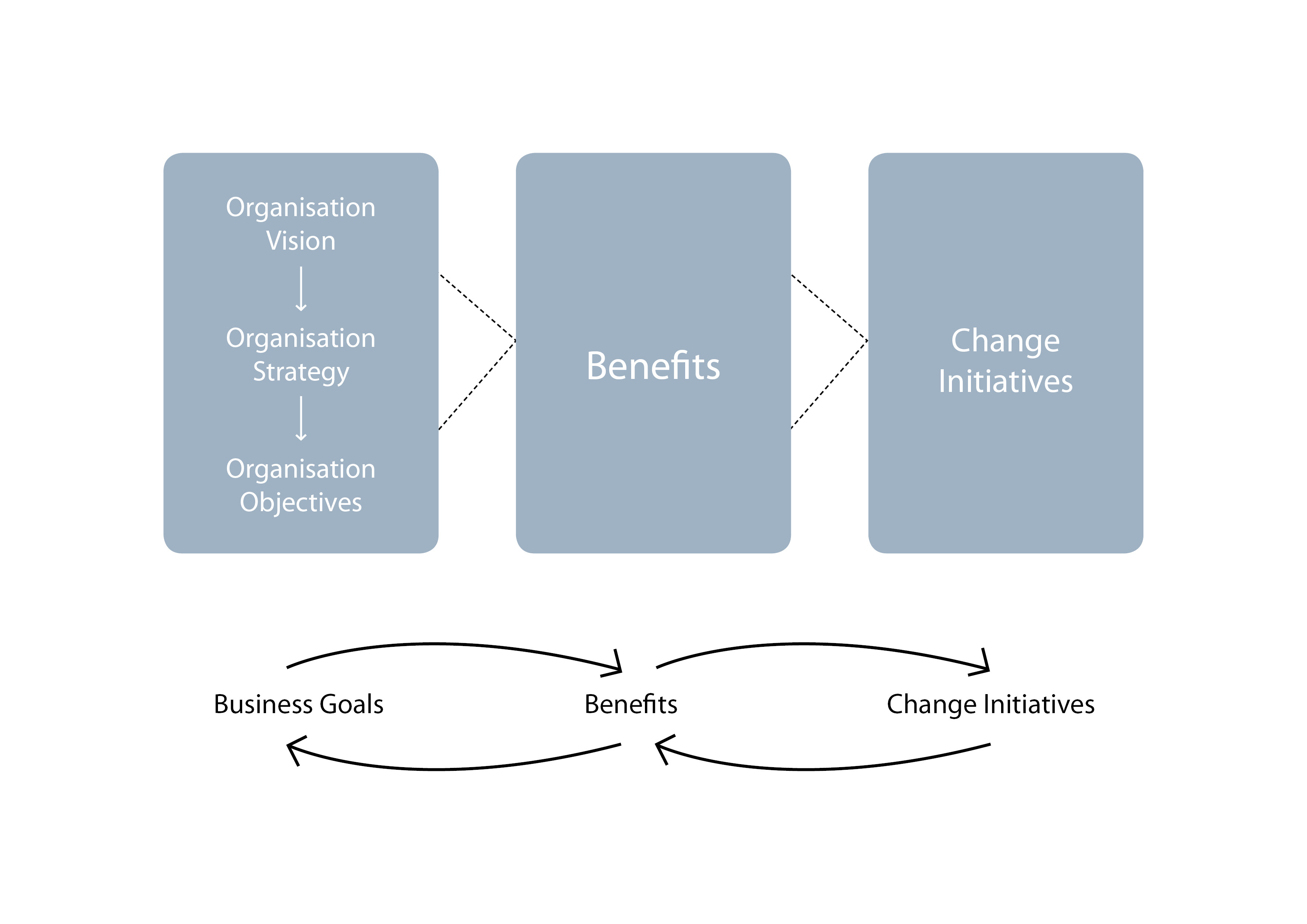Benefits Realisation Management
This page references current best benefits management practice and introduces Benefits Realisation Management (BRM).
In many ways Benefits Management has yet to find its feet in the world of change management although some organisations have become strong advocates for the approach and have sought to establish a baseline of understanding, standardisation, guidance and training support. Within the public sector and to a lesser degree the private sector, the uptake of the approach is impressive but there is wide agreement that much more must be done to improve its effectiveness.
Benefits Management – the fundamentals
Too often, new business solutions are implemented in organisations with little understanding of what is required to transition them into service or even what difference they will make to operational performance. These failures are frequently costly, demoralising for those associated with the changes and contribute to a growing reluctance in the workforce to embark on ‘risky’ change programmes in the future.
The most distinctive aspect of Benefits Management is that it provides a robust ‘end-to-end’ method upon which organisational change initiatives can rely. Benefits Management based initiatives are focussed upon and deliver real business benefits that are fully in line and supportive of the organisations strategic business objectives.
Benefits Management provides a context for change for all stakeholders and especially those involved in the change process or impacted by the resulting changes. By enabling both an inclusive and collaborative working environment, many of the traditional downstream issues associated with change (resistance, frustration, poor usability etc) are reduced, if not eliminated.
Too many problems are incurred in change projects where poor (or no) succession planning frequently results in a dilution of the required level of sponsorship, resources and management support to make the project successful. Change failure both de-motivates the organisation’s work force and deprives it of the benefits that the change initiative was to achieve. One of the key attributes of the Benefits Management approach to organisational change is its overarching requirement for the meaningful assignation of roles, responsibilities and accountabilities throughout the life of a change initiative.

